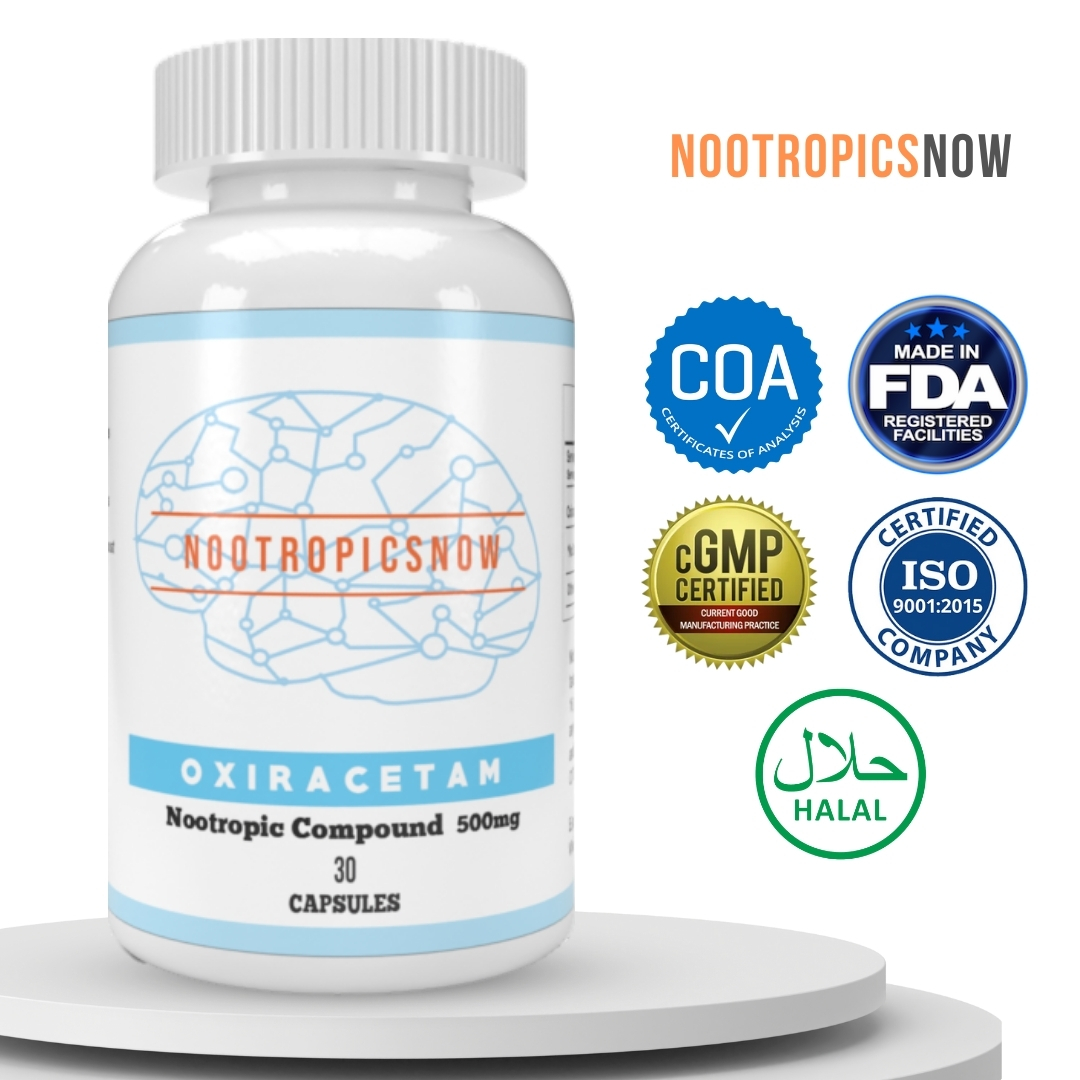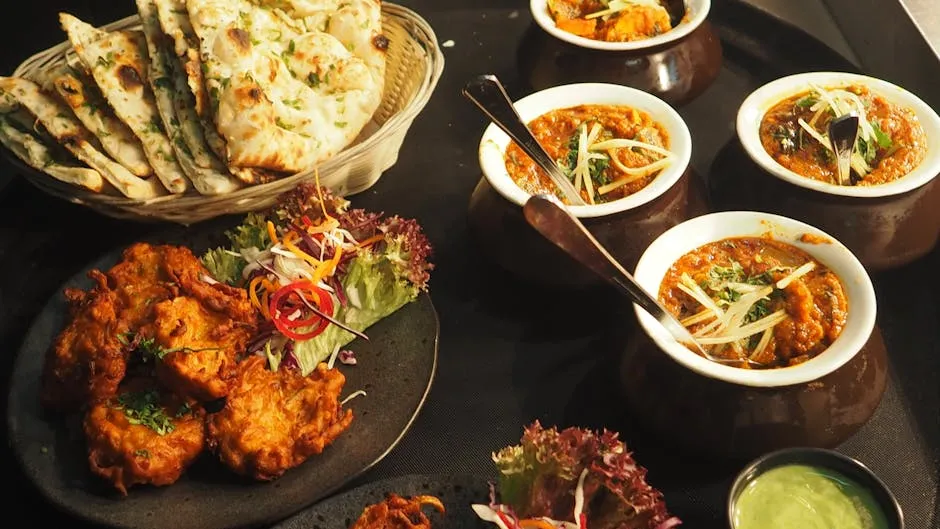Maitake Mushroom Philippines: Where to Buy

Maitake Mushroom Philippines: Cultivation, Benefits, and Availability

What is Maitake Mushroom?
Maitake mushroom, scientifically known as Grifola frondosa, is a prized edible and medicinal mushroom. Its name, translating to “dancing mushroom” in Japanese, alludes to the joyful dance people are said to perform upon discovering it in the wild. Maitake is highly regarded for its unique flavor and purported health benefits, making it a sought-after ingredient in culinary and traditional medicine practices.
Distinctive Characteristics
Grifola frondosa stands out due to its polypore nature, which means it lacks gills on its underside and instead possesses pores. Its appearance is equally distinctive, as it grows in large clusters resembling a hen’s plumage or a ruffled skirt, hence the alternative name “Hen of the Woods.” These clusters can become quite sizable, sometimes weighing over 50 pounds. Coloration typically varies from light brown to grayish-brown.
Nutritional Profile
Maitake mushrooms are low in calories and rich in nutrients. They contain significant amounts of vitamins B and D, along with minerals like potassium, selenium, and fiber. Furthermore, they are a source of polysaccharides, notably beta-glucans, which are believed to contribute to their immune-boosting properties. The nutritional composition makes them a valuable addition to a balanced diet, and its increasing availability in the Philippine market has given many consumers the opportunity to enjoy its health benefits.
For those looking to supplement their diet with mushroom benefits, a variety of options are available:

View Product
View Product-Nootropic-Immunity-Antioxidant-Booster-Supplement-i.202321183.3888718536)

View Product
Maitake Mushroom Cultivation in the Philippines
Maitake mushroom cultivation presents promising opportunities in the Philippines, given the country’s tropical climate and accessibility to appropriate agro-waste. However, successfully growing Maitake requires carefully controlled environmental conditions, making it more challenging compared to cultivating other mushrooms like oyster mushrooms. Despite challenges, local growers have adopted various cultivation strategies to harness its unique potential.
Suitable Climate Conditions
While Maitake thrives in cooler temperatures, adaptation is possible under the Philippines’ tropical climate. Successful cultivation necessitates maintaining optimal humidity levels (80-90%), adequate ventilation, and temperature control within a specific range (15-24°C). These conditions are typically achieved indoors using climate-controlled facilities.
Substrate Preparation
Substrate preparation is essential in Maitake mushroom cultivation. The substrate supplies essential nutrients required for the mycelium growth. Common substrate components used are hardwood sawdust, rice bran, and other supplements, which must be thoroughly sterilized to eliminate competing microorganisms. Some research suggests the utilization of unique substrate recipes using local Philippine resources can enhance yield and nutritional content.
Inoculation and Incubation
Inoculation involves introducing Maitake spawn into prepared substrates. The spawn provides the mycelium from which the mushrooms grow. After inoculation, the substrate bags are incubated in a dark and climate-controlled environment. Incubation periods can range from 2 to 4 weeks, during which the mycelium colonizes the substrate.
Fruiting Stage
Once the substrate is fully colonized, environmental conditions must be adjusted to induce fruiting. This involves reducing temperature, increasing humidity, and providing light exposure. Maitake mushrooms typically fruit in clusters, and harvesting is performed when the caps reach the desired size. Careful harvesting ensures continued production from subsequent flushes.
Challenges and Opportunities for Local Growers
Despite the potential, local growers face several challenges, including maintaining climate control in a tropical setting and preventing contamination. Additionally, the specialized knowledge needed for successful Maitake cultivation is a barrier. Opportunities for local growers involve adopting innovative farming technologies, sourcing local substrates, and collaborating with research institutions to optimize cultivation practices.
Health Benefits of Maitake Mushroom
Maitake mushrooms are celebrated for their potential health benefits. They are rich in nutrients and bioactive compounds that may offer several advantages. While research is ongoing, existing studies suggest promising effects.
Immune System Support
Maitake mushrooms are known to contain beta-glucans, complex polysaccharides that stimulate the immune system. Beta-glucans activate immune cells, such as macrophages and natural killer cells, enhancing the body’s ability to fight off infections and diseases. Studies have indicated that Maitake beta-glucans could improve immune response in cancer patients and enhance overall immune function. For added immune support, consider supplements such as:

View Product
View Product
View Product-Nootropic-Boost-Weight-Loss-Energy-Alert-NOT-TEA-i.202321183.7175517508)
Blood Sugar Regulation
Research has demonstrated that Maitake mushrooms could help regulate blood sugar levels, making them valuable for people with diabetes or insulin resistance. Certain compounds in Maitake mushrooms enhance insulin sensitivity and improve glucose metabolism. Regular consumption of Maitake might contribute to better glycemic control and reduce the risk of diabetes complications.
Cholesterol Reduction
Maitake mushrooms have shown promise in lowering cholesterol levels. Studies indicate that they can reduce both total cholesterol and LDL (bad) cholesterol while increasing HDL (good) cholesterol. These effects are attributed to the fiber and other bioactive compounds found in Maitake mushrooms, which aid in cholesterol metabolism and excretion.
Anti-Cancer Properties
Maitake mushrooms have been explored for their potential anti-cancer properties. Research suggests that certain extracts from Maitake could inhibit the growth and spread of cancer cells. Specifically, Maitake D-Fraction, a refined extract, has demonstrated anti-cancer effects in various laboratory and animal studies. While more research is needed, preliminary findings suggest that Maitake could play a supportive role in cancer treatment.
Antioxidant Effects
Maitake mushrooms are a source of antioxidants, which help protect the body against damage from free radicals. Antioxidants neutralize free radicals, reducing oxidative stress and inflammation. This could have benefits for overall health, including reducing the risk of chronic diseases such as heart disease and cancer.
Weight Management
Maitake mushrooms are low in calories and rich in fiber, making them beneficial for weight management. Fiber promotes satiety, helping to control appetite and reduce calorie intake. Additionally, the bioactive compounds in Maitake may influence metabolism and fat storage, contributing to weight loss efforts.
Culinary Uses and Recipes
Maitake mushrooms are incredibly versatile in the kitchen, thanks to their unique flavor and texture. Whether sautéed, roasted, or added to soups and stews, they add an earthy, umami-rich depth to a wide variety of dishes.
Sautéed Maitake Mushrooms
A simple yet delicious way to enjoy Maitake mushrooms is by sautéing them. Heat olive oil or butter in a pan over medium heat. Add the mushrooms and cook until they are tender and lightly browned. Season with salt, pepper, and garlic for a savory side dish or topping.
Roasted Maitake Mushrooms
Roasting Maitake mushrooms brings out their natural sweetness and enhances their crispy texture. Toss the mushrooms with olive oil, salt, pepper, and any desired herbs or spices. Spread them in a single layer on a baking sheet and roast in a preheated oven until they are golden brown and crispy.
Maitake Mushroom Soup
Maitake mushrooms can be a star ingredient in soups and stews. Add them to broth-based or creamy soups for added depth and umami flavor. Pair them with other vegetables, herbs, and proteins for a hearty and nutritious meal.
Maitake Mushroom Risotto
For a luxurious and flavorful dish, try adding Maitake mushrooms to risotto. Sauté the mushrooms with onions and garlic, then incorporate them into the risotto along with broth, Parmesan cheese, and herbs for a creamy and comforting dish.
Maitake Mushroom Stir-Fry
Add Maitake mushrooms to your favorite stir-fry recipes for added texture and flavor. Combine them with vegetables, proteins, and sauces for a quick and healthy meal. Their meaty texture makes them a great addition to vegetarian and vegan stir-fries.
Where to Buy Maitake Mushroom in the Philippines
Finding Maitake mushrooms in the Philippines can be challenging but is increasingly possible with the rising interest in specialty mushrooms. Availability may vary depending on location and season, so it’s best to check multiple sources.
Online Retailers
Several online retailers in the Philippines specialize in selling specialty mushrooms, including Maitake. These retailers often source their mushrooms from local growers and import high-quality products. Check online marketplaces and e-commerce sites for options. Availability can fluctuate, so signing up for newsletters or alerts could help in finding when Maitake is in stock.
Specialty Grocery Stores
Specialty grocery stores and gourmet food shops in urban areas like Metro Manila and Cebu may carry Maitake mushrooms. These stores typically cater to customers looking for unique and high-quality ingredients. Call ahead to check if they currently have Maitake in stock and to inquire about pricing.
Farmers’ Markets
Farmers’ markets can be a good source for locally grown Maitake mushrooms. Visit local farmers’ markets in your area to see if any mushroom growers are selling their products. This option supports local farmers and provides access to fresh, seasonal mushrooms.
Restaurants and Chefs
Some restaurants and chefs that feature specialty ingredients on their menus may be able to direct you to their suppliers of Maitake mushrooms. Contact local restaurants known for using unique and foraged ingredients and ask if they can share information about their mushroom sources.
Directly from Growers
Contacting mushroom growers directly is a great way to source fresh Maitake mushrooms. Search for mushroom farms in the Philippines and inquire about their products. This direct approach could secure consistent access and potentially lower prices.
Pricing and Availability
The pricing and availability of Maitake mushrooms in the Philippines can vary significantly depending on the source, season, and location. Imported Maitake mushrooms are generally more expensive compared to locally grown options. The price also depends on the form, whether it’s fresh, dried, or powdered. Fresh Maitake mushrooms are typically more expensive than dried versions, but they offer superior flavor and texture.
The availability of Maitake mushrooms is often limited, especially for fresh varieties. The supply might increase during the cooler months, which are more favorable for mushroom cultivation. Checking with multiple sources and being flexible with substitutes could help overcome availability issues.
Legal and Ethical Considerations
While Maitake mushroom consumption is generally safe and legal in the Philippines, it is essential to be aware of certain legal and ethical considerations related to sourcing and cultivation.
Sourcing from Reputable Suppliers
When purchasing Maitake mushrooms, ensure they are sourced from reputable suppliers that adhere to food safety standards. This minimizes the risk of contamination or misidentification. Look for suppliers with certifications or positive reviews, as this could be an indicator of product quality and safety.
Sustainable Harvesting
If sourcing wild Maitake mushrooms, practice sustainable harvesting methods to avoid damaging the environment and ensure future availability. Only harvest mature mushrooms, leaving younger ones to grow and reproduce. Avoid disturbing the surrounding ecosystem.
Cultivation Practices
Cultivate Maitake mushrooms using environmentally friendly practices. This includes using sustainable substrates, minimizing water and energy consumption, and avoiding harmful chemicals. Environmentally responsible cultivation practices support ecosystem health and long-term sustainability.
Respecting Local Regulations
Be aware of and respect local regulations regarding mushroom cultivation, harvesting, and trade. Some areas might have specific rules and guidelines to protect local flora and fauna. Staying informed and compliant ensures responsible and ethical practices.
The Future of Maitake Mushroom in the Philippines
The future of Maitake mushroom cultivation and consumption in the Philippines looks promising, given increasing consumer interest and ongoing research efforts. Several factors are expected to contribute to the growth of the Maitake mushroom industry in the country.
Growing Demand
The increasing awareness of the health benefits of Maitake mushrooms is driving demand among health-conscious consumers. As more people discover the nutritional value and potential medicinal properties of these mushrooms, the market is expected to expand.
Research and Development
Continued research and development efforts are essential for optimizing Maitake mushroom cultivation practices in the Philippines. This includes identifying suitable local substrates, improving climate control techniques, and developing disease-resistant strains. Collaboration between research institutions, local growers, and government agencies could accelerate progress and innovation.
Government Support
Government support plays a crucial role in the development of the mushroom industry in the Philippines. Initiatives such as providing training, technical assistance, and financial incentives could encourage more farmers to engage in Maitake mushroom cultivation. The government could also invest in research and infrastructure to support the industry’s growth.
Market Expansion
Expanding the market for Maitake mushrooms requires creating awareness among consumers and exploring new product applications. This includes promoting the culinary versatility of Maitake mushrooms, developing value-added products, and reaching out to export markets. Successful marketing and distribution strategies could unlock the full potential of the Maitake mushroom industry in the Philippines.
Sustainable Practices
Adopting sustainable cultivation and harvesting practices is essential for the long-term viability of the Maitake mushroom industry. This includes using renewable resources, minimizing waste, and protecting the environment. Promoting sustainability ensures that future generations could continue to benefit from these valuable mushrooms.
For those looking to enhance cognitive function, consider the following supplements that may complement the benefits of Maitake mushrooms:
View Product

View Product

View Product
Maitake Mushroom Philippines: Cultivation, Benefits, and Where to Buy
Maitake mushrooms ( Grifola frondosa), often called “hen of the woods” due to their feathery appearance, are increasingly recognized in the Philippines for both their culinary and medicinal properties. These adaptogenic mushrooms, traditionally used in Japanese and Chinese medicine, are now gaining popularity among health-conscious Filipinos. This section explores the cultivation of Maitake mushrooms in the Philippines, their numerous health benefits, and where consumers can find them locally.
Cultivation of Maitake Mushrooms in the Philippines
The Philippines presents unique opportunities and challenges for Maitake mushroom cultivation. The tropical climate, though generally warm, can be manipulated to create optimal growing conditions. Moreover, the availability of agricultural waste products as substrate makes the cultivation process environmentally sustainable and cost-effective.
Adapting to the Philippine Climate
Maitake mushrooms thrive in cooler temperatures, ideally between 18°C and 24°C (64°F and 75°F). However, the Philippine climate is generally warmer, necessitating specific cultivation techniques. Therefore, controlled environments such as mushroom houses or specialized growing rooms are necessary to regulate temperature and humidity. Air conditioning systems, coupled with proper ventilation, create the ideal microclimate for successful cultivation.
Substrate Selection and Preparation
Substrate plays a crucial role in Maitake mushroom cultivation. In the Philippines, readily available agricultural waste products like rice straw, sugarcane bagasse, and corn husks serve as excellent substrates. Supplementation with nitrogen-rich sources like rice bran and wheat bran further enhances mycelial growth. The substrate undergoes sterilization or pasteurization to eliminate competing microorganisms. Furthermore, proper hydration of the substrate is vital, ensuring adequate moisture content for optimal mycelial colonization.
Inoculation and Incubation
Once the substrate is prepared, inoculation follows. The substrate is mixed with Maitake mushroom spawn (mycelium grown on a suitable medium, such as grains) inside a sterile setting. Therefore, proper hygiene is crucial at this stage to avoid contamination. Afterward, the inoculated substrate is placed in incubation chambers, where temperature and humidity are carefully controlled. The incubation period usually lasts for several weeks, during which the mycelium colonizes the substrate. During the incubation process, substrate is monitored regularly to ensure that the fungus culture is spreading and not being contaminated.
Fruiting and Harvesting
The fruiting stage commences when the mycelium has fully colonized the substrate. This is triggered by lowering the temperature and increasing humidity levels. Adequate lighting and ventilation are also crucial during this phase. Maitake mushrooms develop as clusters of feathery caps, resembling a “hen of the woods.” They are harvested when the caps are fully formed but still firm. Careful harvesting is necessary to avoid damaging the remaining mycelium, allowing for subsequent flushes of mushrooms. Therefore, patience is key to maximizing yields during the harvesting process.
Post-Harvest Handling
Post-harvest handling is crucial to maintaining the quality and shelf life of Maitake mushrooms. Proper cleaning, sorting, and packaging prevent spoilage and ensure the product reaches consumers in optimal condition. Refrigeration at 4°C (39°F) extends the shelf life. Furthermore, processing methods like drying, pickling, and powdering are employed to create value-added products.
Health Benefits of Maitake Mushrooms
Maitake mushrooms are renowned for their medicinal properties, stemming from their high concentration of bioactive compounds. These compounds contribute to various health benefits, including immune support, blood sugar regulation, and potential anti-cancer effects.
Immune System Support
Maitake mushrooms are rich in beta-glucans, a type of polysaccharide known for its immune-modulating properties. Beta-glucans stimulate the immune system by activating immune cells like macrophages and natural killer cells. Consequently, this enhances the body’s ability to fight off infections and diseases. Therefore, regular consumption of Maitake mushrooms can contribute to a stronger and more resilient immune system.
Blood Sugar Regulation
Studies have shown that Maitake mushrooms can improve insulin sensitivity and lower blood sugar levels. This is attributed to compounds that enhance glucose metabolism and reduce insulin resistance. Thus, Maitake mushrooms show promise as a complementary therapy for managing diabetes. Therefore, healthcare professionals recommend to consult a doctor before using maitake mushroom for treatment.
Anti-Cancer Properties
Research suggests that Maitake mushrooms possess anti-cancer properties. Specific compounds in Maitake mushrooms, such as D-fraction, have demonstrated the ability to inhibit cancer cell growth and induce apoptosis (programmed cell death) in laboratory studies. Furthermore, research indicates that D-fraction can enhance the effectiveness of chemotherapy while reducing its side effects. Thus, ongoing research explores the potential of Maitake mushrooms in cancer prevention and treatment.
Antioxidant Effects
Maitake mushrooms are a source of antioxidants, which help protect cells from damage caused by free radicals. Free radicals contribute to aging and various chronic diseases. By neutralizing free radicals, antioxidants reduce oxidative stress and promote overall health. Therefore, adding Maitake mushrooms to one’s diet enhances antioxidant intake.
Other Potential Benefits
In addition to the above, studies show other potential benefits, including:

View Product
View Product-Brain-Boost-Mood-Depression-Immunity-Supplement-i.202321183.3275610907)
Where to Buy Maitake Mushrooms in the Philippines
As awareness of Maitake mushroom’s benefits grows, its availability in the Philippines is also increasing. Consumers can find Maitake mushrooms through various channels.
Online Retailers
Several online retailers in the Philippines specialize in selling mushrooms and other health products. These platforms offer convenience and a wide selection of fresh and dried Maitake mushrooms, as well as extracts and supplements. Popular online platforms include Lazada and Shopee. Moreover, it’s important to check the seller’s ratings and reviews before purchase to ensure product quality and authenticity.
Health Food Stores
Health food stores and organic markets are another option for purchasing Maitake mushrooms. These stores often prioritize quality and source their products from reputable suppliers. Therefore, shopping at these stores ensures better product quality and safety.
Local Markets
Some local markets in urban areas may carry fresh Maitake mushrooms, especially if there are local mushroom farmers in the region. The best way to find them is to inquire at the produce section of the market. Thus, this can be an affordable way to buy fresh Maitake mushrooms.
Specialty Mushroom Farms
Directly purchasing from specialty mushroom farms is a great way to secure fresh and high-quality Maitake mushrooms. Some Philippine farms have websites or social media pages where they advertise their products and take orders. Furthermore, this approach supports local farmers and ensures you’re getting the freshest possible product.
Considerations When Buying
When buying Maitake mushrooms, it is important to consider the following:
Incorporating Maitake Mushrooms into the Filipino Diet
Maitake mushrooms’ versatile flavor profile makes them an excellent ingredient in a variety of Filipino dishes. They can be sautéed, grilled, roasted, or added to soups, stews, and stir-fries.
Popular Recipes
Some popular ways to incorporate Maitake mushrooms into the Filipino diet include:
Culinary Tips
Here are some culinary tips for cooking with Maitake mushrooms:
Conclusion
Maitake mushrooms offer a promising addition to the Philippine culinary and health landscape. With their numerous health benefits, versatile flavor, and increasing availability, they are poised to become a staple in the diet of health-conscious Filipinos. The cultivation of Maitake mushrooms also presents economic opportunities for local farmers, contributing to rural development and promoting sustainable agriculture. By understanding the cultivation techniques, health benefits, and culinary uses of Maitake mushrooms, consumers and producers in the Philippines can harness their potential and contribute to a healthier and more sustainable future.

